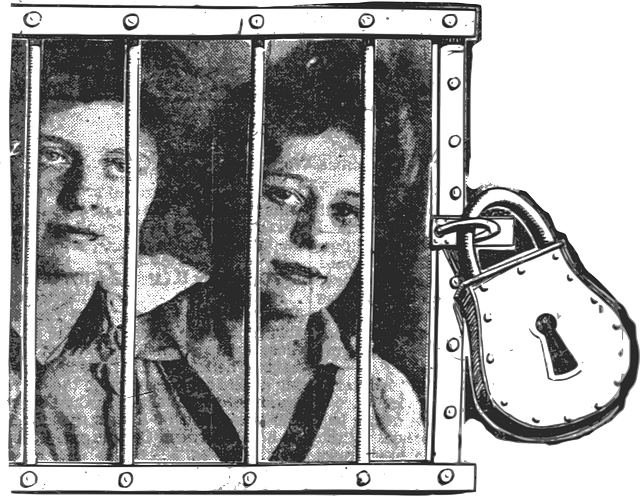The rise of ride-sharing services like Uber and Lyft has transformed urban transportation, especially among Millennials who value tech convenience. While these platforms offer unprecedented accessibility, they also raise significant safety concerns, particularly regarding Millennial DUI (drunk driving) rates. Millennial DUI Awareness Campaigns play a crucial role in promoting responsible drinking behavior, but tracking and holding drivers accountable is challenging due to the anonymity and flexibility of ride-sharing apps. Ride-sharing companies must implement robust systems to monitor driver performance, detect misconduct, and prioritize user safety while maintaining operational efficiency. These campaigns, leveraging modern communication tools and data insights, foster open dialogue about drunk driving dangers among Millennials, encouraging responsible choices like designated drivers or ride-sharing services, ultimately contributing to safer roads for all generations.
In the age of digital connectivity, ride-sharing services have transformed how we travel. However, with this convenience comes a growing concern: driver accountability. This article delves into the rising trend of ride-sharing and its societal implications, exploring the challenges in holding drivers accountable. We examine Millennial DUI Awareness Campaigns as a strategic approach to fostering safer road environments, addressing unique issues within the ride-sharing landscape. By understanding these aspects, we can work towards enhancing safety for all users.
- The Rise of Ride-Sharing and Its Impact on Society
- Challenges in Ensuring Driver Accountability
- Millennial DUI Awareness Campaigns: Strategies for Safer Roads
The Rise of Ride-Sharing and Its Impact on Society

The rise of ride-sharing services has significantly transformed the way people navigate cities and has had a profound impact on society as a whole. With just a few taps on a smartphone app, users can request a ride, instantly connecting them to a network of drivers offering their vehicles for hire. This convenience has particularly resonated with younger generations, such as Millennials, who have come of age in an era dominated by technology and instant gratification. As a result, ride-sharing platforms like Uber and Lyft have become integral parts of urban life, shaping daily routines and altering traditional concepts of transportation.
This shift also carries important implications for safety, especially regarding alcohol consumption and driving. Millennial DUI awareness campaigns have gained traction in this context, aiming to educate and promote responsible behavior among this demographic. As ride-sharing becomes more prevalent, it raises questions about driver accountability, particularly after consuming alcohol. Ensuring that drivers adhere to safety standards and remain vigilant while behind the wheel is crucial, as it directly impacts not only their passengers’ well-being but also contributes to broader societal goals of reducing drunk driving incidents and promoting public safety.
Challenges in Ensuring Driver Accountability

The rise of ride-sharing services has revolutionized transportation, but it also presents unique challenges when it comes to driver accountability. One significant concern is the potential for impaired driving, especially among younger drivers. While Millennial DUI Awareness Campaigns play a vital role in educating and promoting responsible behavior, ensuring driver accountability goes beyond these initiatives. The anonymity and flexibility of ride-sharing platforms can make it difficult to track and hold drivers accountable for their actions both before and after trips.
In a dynamic work environment where drivers are not employed directly but rather through gig economy contracts, verifying background information, monitoring in-app behavior, and implementing effective disciplinary measures become complex tasks. Ride-sharing companies must balance user safety with operational efficiency, making it crucial to develop robust systems that track driver performance, detect unusual patterns, and swiftly address any discrepancies or misconduct.
Millennial DUI Awareness Campaigns: Strategies for Safer Roads

Millennial DUI awareness campaigns play a pivotal role in fostering safer road environments, addressing a demographic-specific concern. With Millennials making up a significant portion of ride-sharing drivers, targeted initiatives are essential to promoting responsible driving habits. These campaigns leverage modern communication channels and innovative strategies to capture the attention of younger audiences, often through social media platforms and interactive digital content. By focusing on relatable themes like peer influence, risk assessment, and personal accountability, these campaigns aim to reduce impaired driving among Millennials.
Using data-driven insights, educational resources, and peer mentorship programs, Millennial DUI awareness campaigns encourage open dialogue about the consequences of drinking and driving. They emphasize the importance of making informed decisions, choosing designated drivers, or utilizing ride-sharing services as viable alternatives. Through community engagement and collaborative efforts with ride-sharing companies, these initiatives contribute to a culture of road safety, ensuring that both Millennials and the broader public are equipped with the knowledge to make responsible choices while navigating our roads.
As society embraces the convenience of ride-sharing, it’s crucial to address the challenges in holding drivers accountable. The rise of ride-sharing platforms has brought about significant changes in urban mobility, but it also presents unique safety concerns, particularly regarding Millennial DUI (driving under the influence) rates. Implementing targeted awareness campaigns tailored to this demographic can significantly enhance road safety. By leveraging modern communication channels and peer-to-peer education, these campaigns can effectively reach and educate young drivers, fostering a culture of responsibility and accountability on the roads.






